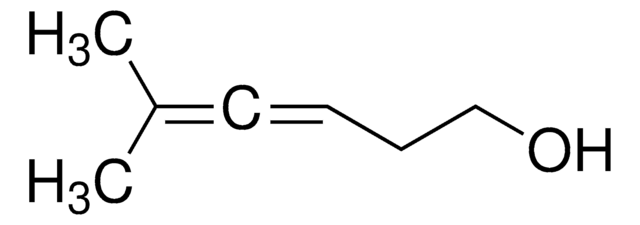774103
Kupfer
nanopowder, 60-80 nm particle size (SAXS), ≥99.5% trace metals basis
Synonym(e):
Copper nanoparticles
Anmeldenzur Ansicht organisationsspezifischer und vertraglich vereinbarter Preise
Alle Fotos(2)
About This Item
Empirische Formel (Hill-System):
Cu
CAS-Nummer:
Molekulargewicht:
63.55
EG-Nummer:
MDL-Nummer:
UNSPSC-Code:
12352302
PubChem Substanz-ID:
NACRES:
NA.23
Empfohlene Produkte
Qualitätsniveau
Assay
≥99.5% trace metals basis
Form
nanopowder
Widerstandsfähigkeit
1.673 μΩ-cm, 20°C
Partikelgröße
60-80 nm (SAXS)
bp
2567 °C (lit.)
mp (Schmelzpunkt)
1083.4 °C (lit.)
Dichte
8.94 g/mL at 25 °C (lit.)
Anwendung(en)
battery manufacturing
SMILES String
[Cu]
InChI
1S/Cu
InChIKey
RYGMFSIKBFXOCR-UHFFFAOYSA-N
Anwendung
Copper nanopowders have seen use in biomedical applications as an antimicrobial ; as plasmonic materials and as a component of reforming catalysts.
Angaben zur Herstellung
Partially Passivated: < 5% oxygen added by weight
Signalwort
Danger
H-Sätze
Gefahreneinstufungen
Aquatic Acute 1 - Aquatic Chronic 1 - Flam. Sol. 2 - Self-heat. 1
Lagerklassenschlüssel
4.2 - Pyrophoric and self-heating hazardous materials
WGK
WGK 2
Flammpunkt (°F)
Not applicable
Flammpunkt (°C)
Not applicable
Hier finden Sie alle aktuellen Versionen:
Besitzen Sie dieses Produkt bereits?
In der Dokumentenbibliothek finden Sie die Dokumentation zu den Produkten, die Sie kürzlich erworben haben.
Kunden haben sich ebenfalls angesehen
Chan; G.H.; et al.
Nano Letters, 7, 1947-1952 (2007)
Vizcaino; A.J.; et al.
International Journal of Hydrogen Energy, 32, 1450-1461 (2007)
Jayesh P Ruparelia et al.
Acta biomaterialia, 4(3), 707-716 (2008-02-06)
The antimicrobial properties of silver and copper nanoparticles were investigated using Escherichia coli (four strains), Bacillus subtilis and Staphylococcus aureus (three strains). The average sizes of the silver and copper nanoparticles were 3 nm and 9 nm, respectively, as determined
Seiko Ishida et al.
Proceedings of the National Academy of Sciences of the United States of America, 110(48), 19507-19512 (2013-11-13)
Copper is an essential trace element, the imbalances of which are associated with various pathological conditions, including cancer, albeit via largely undefined molecular and cellular mechanisms. Here we provide evidence that levels of bioavailable copper modulate tumor growth. Chronic exposure
R Squitti et al.
Neurology, 67(1), 76-82 (2006-07-13)
To assess whether serum copper in Alzheimer disease (AD) correlates with cognitive scores, beta-amyloid, and other CSF markers of neurodegeneration. The authors studied copper, ceruloplasmin, total peroxide, and antioxidants levels (TRAP) in serum; beta-amyloid in plasma; and copper, beta-amyloid, h-tau
Unser Team von Wissenschaftlern verfügt über Erfahrung in allen Forschungsbereichen einschließlich Life Science, Materialwissenschaften, chemischer Synthese, Chromatographie, Analytik und vielen mehr..
Setzen Sie sich mit dem technischen Dienst in Verbindung.







